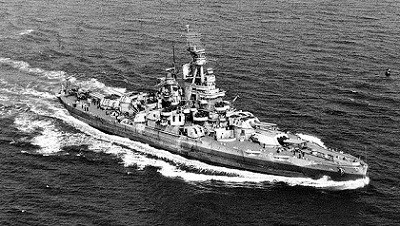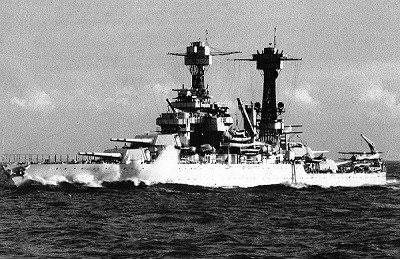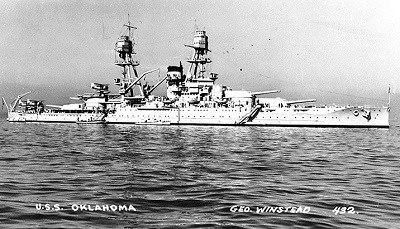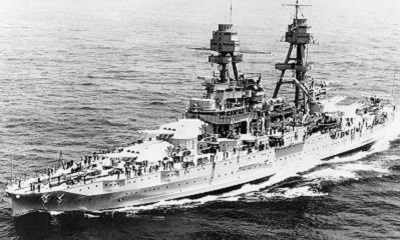
USS NevadaUSS Nevada Video (Youtube) Following her role at Pearl Harbor, the USS Nevada went on to serve in many Pacific missions before being sent to Europe. On June 6, 1944, she served as the flagship for the D-Day invasion, making her the only ship to have fought in both the attack on Pearl Harbor and the Normandy landings. 
USS ArizonaUSS Arizona Video (Youtube) On December 7, 1941, in the early moments of the attack on Pearl Harbor, the USS Arizona was struck multiple times. A bomb penetrated her armored deck, igniting the ammunition magazines in the forward section of the ship. The resulting explosion claimed the lives of 1,177 sailors and Marines. Due to the extensive damage, the USS Arizona was never salvaged and still rests at the bottom of Pearl Harbor. 
USS VestalThe USS Vestal, a repair ship moored next to the USS Arizona on December 7, 1941, found itself in the line of fire during the attack on Pearl Harbor. Although not a primary target, the Vestal was struck by bombs meant for the battleships, suffering significant damage. Despite the chaos and destruction, the crew of the USS Vestal played a critical role in rescuing sailors from the nearby USS Arizona, providing aid during one of the darkest moments of the attack. 
USS TennesseeThe USS Tennessee, the lead ship of her class, was launched in April 1919 and served in various locations before being stationed in San Pedro, California, for nearly two decades. In 1940, as tensions with Japan escalated, the USS Tennessee and other battleships were deployed to the Pacific as part of President Roosevelt’s strategy to counter Japanese expansion. On December 7, 1941, the USS Tennessee was moored beside the USS West Virginia when the attack on Pearl Harbor began. Although damaged during the assault, she survived and was quickly repaired and modernized. The USS Tennessee would go on to play a vital role in numerous battles throughout the Pacific Theater during World War II. 
USS West VirginiaThe USS West Virginia was commissioned in December 1923, serving in training and tactical development operations until 1939, before being sent to Pearl Harbor in 1940. On December 7, 1941, the USS West Virginia was struck by six torpedoes and two bombs, leading to her sinking and the loss of 106 crew members. In May 1942, the ship was salvaged and sent for repairs. After being restored, she returned to service and played a key role in many battles across the Pacific. The USS West Virginia was also present at Tokyo Bay during the Japanese surrender, marking the end of World War II. 
USS MarylandThe USS Maryland was commissioned in July 1921 and served in various special occasions and training operations throughout her early years. In 1940, she was relocated to Pearl Harbor as part of the Pacific Fleet. On the morning of December 7, 1941, the USS Maryland was moored at Battleship Row alongside the USS Oklahoma. Despite the chaos of the attack, the Maryland sustained only minor damage from bombs and tragically lost four crewmembers. By June 1942, she became the first ship damaged at Pearl Harbor to be fully repaired and return to active duty, playing a key role in the war that followed. 
USS OklahomaUSS Oklahoma Video (Youtube) On December 7, 1941, at the onset of the attack on Pearl Harbor, the USS Oklahoma’s port side was struck by eight torpedoes. In less than twelve minutes, the battleship capsized, her masts touching the harbor floor, trapping hundreds of crew members inside. Tragically, 429 sailors lost their lives, and only 32 of those trapped within the ship could be rescued from the wreckage. 
USS CaliforniaThe USS California, a Tennessee-class battleship completed just after World War I, was commissioned in August 1921 and served as the flagship of the Pacific Fleet for two decades. On December 7, 1941, during the attack on Pearl Harbor, the USS California was struck and sunk, with the loss of 105 crew members. Despite this devastating blow, the ship was salvaged, reconstructed, and returned to service. The USS California went on to fight in key battles throughout the remainder of World War II. Ships Not on Battleship RowWhile much of the focus during the attack on Pearl Harbor was on Battleship Row, several other ships across the harbor faced similar devastation. Ships like the USS Utah, moored on the other side of Ford Island, and vessels in drydock, such as the USS Pennsylvania, were also heavily targeted. Despite not being part of the primary battleship lineup, these ships and their crews fought valiantly amidst the chaos, enduring severe damage and significant loss of life. Their roles and sacrifices were integral to the defense on that fateful day. 
USS PennsylvaniaThe USS Pennsylvania was commissioned in June 1916 and initially served with the Atlantic Fleet. In 1922, she was reassigned to the Pacific Fleet, where she participated in fleet tactics and battle practice. On December 7, 1941, the USS Pennsylvania was in drydock undergoing repairs when the attack on Pearl Harbor began. Despite her position, she was one of the first ships to open fire on the incoming Japanese planes. The USS Pennsylvania sustained bomb damage and heavy strafing during the assault, resulting in the deaths of 31 servicemembers. After repairs in March 1942, she was sent back into action, continuing her service in the Pacific throughout World War II.

USS UtahUSS Utah Video (Outside Link) On December 7, 1941, the USS Utah was moored on the opposite side of Ford Island when she was struck by torpedoes early in the attack. Within moments, she capsized and sank, resulting in the loss of 58 crew members. Unlike many other ships at Pearl Harbor, the USS Utah was never salvaged and remains submerged where she sank, a silent memorial to those who perished. |
Last updated: September 25, 2024
